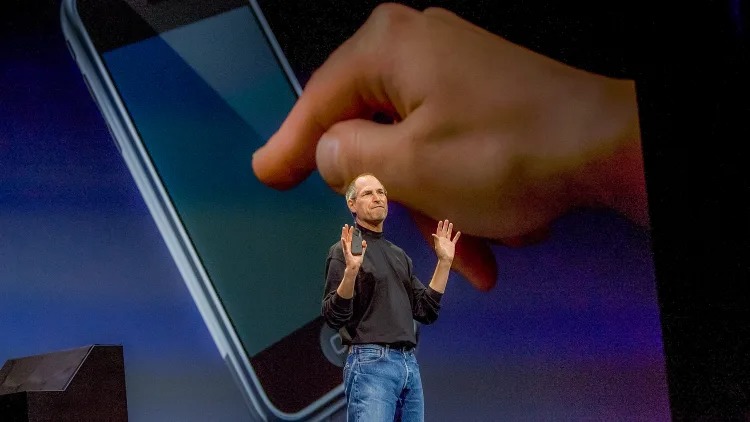- | 9:00 am
How to pitch yourself in 30 seconds
Humility doesn’t pay the bills. Here’s exactly how to get potential clients to say yes.

I spent over a decade deciding whether your email pitch lands you on TV, in an online feature, or gets deleted. Since leaving traditional journalism, I now train executives and entrepreneurs to be effective and confident in their messaging for presentations, on-camera interviews, and pitches. The aim: to win clients, investors, and press.
Your challenges when pitching journalists or potential clients are twofold: humans are cynical and people hate bragging. It makes their skin crawl.
A lackluster pitch is a nonstarter. It confuses or worse, never engages the target audience. Many pitches are uninspired or overly humble leading to an actively disinterested audience. So here’s how to pitch yourself or your company in a way that hooks and keeps your audience’s attention.
The cornerstones of a great pitch are messaging and confidence. If either one is lacking, it just doesn’t work. While I no longer am a national TV journalist, I still contribute segments on TV and articles online. And I now host a top 1.5% podcast, Mom’s Exit Interview, for which I receive hundreds of pitches.
ABC FRAMEWORK TO SELL YOURSELF IN 30 SECONDS
Here’s my ABC Framework to Sell Yourself in 30 Seconds. It works whether it’s aimed for clients, press, in public speaking or in the catch-all “elevator pitch.”
A) Accolades
Everyone hates bragging. But what’s worse than bragging? Having no clients. You’re now screaming: but Kim, bragging turns people off, everyone will think I’m a narcissistic jerk!
First, I can tell you that if you are worried about seeming like a jerk, you probably are not one. Remaining silent about what you do and have achieved isn’t just a deal-killer, it’s a never-stepped-into-the-room halt. As first impressions are made in less than 30 seconds, you need to lead with your accomplishments. You won a prize for your product? Lead with that! You’ve been featured in 10 press outlets? Start there! I can’t tell you how many people hoping to be featured on TV would wait until their fifth sentence to mention their boast-worthy achievement. They already lost my attention—and I was being paid to listen to pitches!
The people you are pitching do not know who you are, what you’ve done, what you’re passionate about, and how you can apply your unique mix of skills and talents to them. So you have to tell them—clearly and succinctly.
How to build accolades into your pitch.
First, take stock of your accomplishments. These can be anything ranging from your sales figures to academic degrees and certifications to company growth to press features. Distinguish yourself in any way possible.
There are ways to make bragging more palatable—mix your accomplishments into a story, or say them with a wink and a nod. My trophies are visible onscreen as part of my Zoom background; when I mention to a potential client that I’ve won six awards, I jokingly point to my trophies, Vanna White-style, to make it lighthearted. And more importantly, I mention how that brag-worthy statement can help them. My clients are proud to work with someone who has won awards, and I’m proud to have won them—why shouldn’t your accomplishments be part of your pitch?
Humility doesn’t pay the bills.
B) Business
After countless pitches, I was still wondering: What does this person do? What are they selling me? As a journalist, How could I include them in a story? And as a podcast host, What will they say on my show?
Be clear and concise when you state what you do. Make clear the transformation a client can expect and make sure to remove jargon. If you’re pitching a journalist, most journalists tell stories to huge audiences, not niche experts, so you need to be very clear.
And make sure to include your “why.” What has driven you to start your company, or if you’re an executive, what’s led to your success in rising the ranks? Former TODAY show producer Patrice Poltzer who is now a Storytelling & Founder Marketing Expert says “so many founders lead their pitches with the what and the how, but the real connection happens from understanding the why.” She encourages founders to start their pitch with “a vulnerable moment, a real moment so that their audience is able to quickly connect to them. Because once you have someone’s attention, then they will be willing to listen and learn about your product or service.”
C) Confidence
Confidence is exuded not just from what you say but your body language—from the very first second.
This means you need strong eye contact, straight posture, and a smile from the get-go. Positivity can be spread through emotional contagion, so leave any negativity at the door. Ideally, connect in a human way. Tell a story, and leave a “conversational coat hook,” a turn of phrase, or something about you that someone could connect with you about.
For example, my 30-second pitch using my ABC Method would be:
I launched the digital video unit for Us Weekly magazine, leading to its $100 million sale after 10 years as a TV news producer that included a stint at Netflix. However, when I found myself working in the delivery room during my child’s birth, I realized it was time to launch my own business and help fellow business owners and executives become thought leaders through video and podcasts. I’ve never looked back and it’s paying off big time: I won six awards for my client and have been featured in many national publications. And on a personal note, I did a solo gap year and I hate olives (which somehow is very polarizing!).
*I timed this and it’s 29 seconds.
WHAT ABOUT EMAIL PITCHES?
Sabina Hitchen, Founder of Press For Success, which teaches business owners how to get press features, says 90% of your pitching the press will begin as an email pitch. She recommends not to lead with your company name first. “You’re wasting valuable real estate on your (currently unknown) company name. Instead, use that space to hook someone, or be clear on the timely story or tips you’re sharing.” She also recommends being clear and not aiming for a “clever newsletter subject, And keep it to 2-3 sentences or you’re likely oversharing irrelevant information.”
After you formulate your ABC pitch, practice it over and over. In the mirror. Yes, it will feel awkward. Then practice it with trusted people, colleagues, friends, and family. By the time you can say it in your sleep, pump yourself up and inject some natural energy back into it.
ABC your way to success. See what I did there.







































